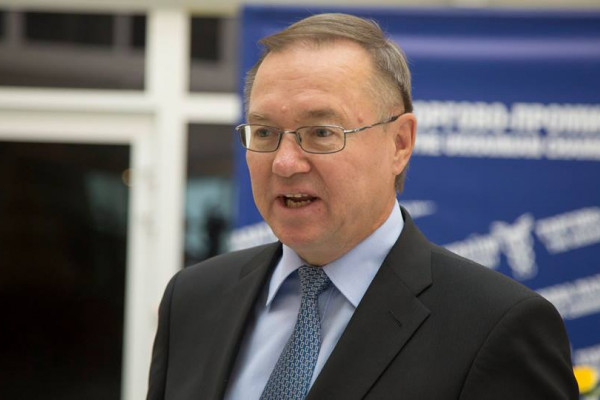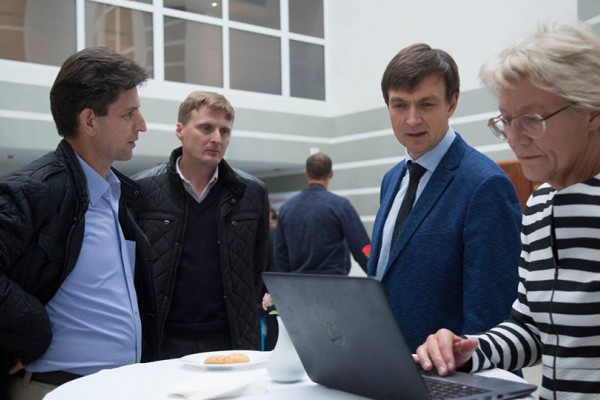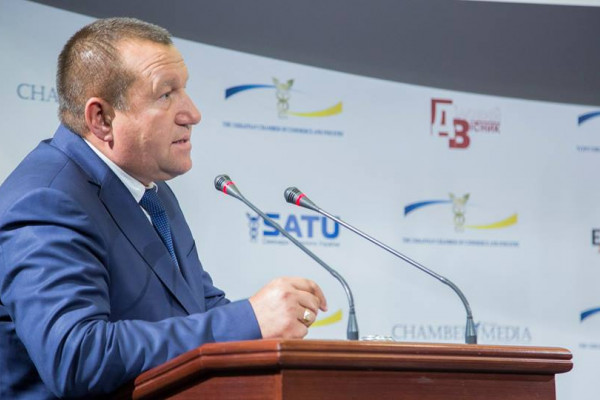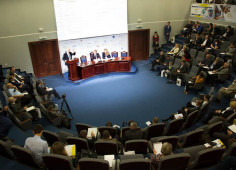Many European countries are striving for a low carbon and resource management. A new science of bioeconomics is paving its way fostering governments to support new clear businesses, and biomass in particular. In Finland, half of bioeconomy is made of forestry, while bioethanol and biodiesel accounts for 25%. Such a picture of bioeconomics is natural as 70% of Finnish territory is covered by forests. At this, coal may no longer be considered as a fuel for thermal power stations soon in the EU. Thus, ambassador of Finland to Ukraine Juha Virtanen came up with a conclusion that it must become natural for Ukraine to use biomass fuels which grow on Ukraine's arable lands, accounting to 70% of the territory. Waste energy management may become a breakthrough industry too.
Yuriy Sakva, chairman of Ukrainian Energy Assembly acknowledged that the alternative energy projects have received impetus from the government in Ukraine. It was in the form of regulatory permission of plugging to conventional power grids and guarantees on purchase of the generated electricity by state authorities. Meantime, if citizens or corporate customers fail to pay bills, no alternative sources of funding have been foreseen in such a case. In Ukraine, the best customers of billing addresses are agricultural enterprises, says Yuriy Sakva. As of present, about USD 1bn of electricity bill arrears show themselves up as uncollectable debts, according to the head of Ukrainian Energy Assembly. In this respect, the tariff policy is difficult to predict. At this, the structure of alternative energy power sales account to only 1.2% of 91.2bn kW in Ukraine a year.
Nevertheless, there is a certain demand for bioenergy in Ukraine. Although, there is a conflict of interests between nuclear power stations and green energy players. The electricity consumption is not mindful of origins, but traditional energy producers enter into competition with renewables at power grids, and especially if considering payments. There is interdependence of all energy producers and the regulator has to consider the issues to mold the inefficiency of the current market structure. Ukraine is facing transitional period in electricity markets, as many power generating plants were privatized. Also, the government plans to shift from all-Ukraine to regional tariff making, as regional consumption patterns differ. Also, there is an ecological issue for Ukraine, as it has many coal burning power stations making carbon emissions. Hence, bioenergy plants have chances to become a substitute of the kind.
In Ukraine, there are good prospects for growing energy plants such as miscanthus or salix. Also, the profit yielding prospects belong to popular sugar beets. Sugar beets may give biofuel for power generation and also provide substance of organic manure for soil. Meantime, wheat straw is a complicated issue due to expensiveness of straw burners, which are not widely produced in the world. Straw burners are a different kind of furnaces, as straw contains plenty of Si content that damages wood fuel boilers.
Annika Henriksson from Henriksson Salix AB presented energy plants solutions for power generation. The company has been operating since 1991 and gained much experience in planting and growing willow (salix). Annika says that an efficient project is good at least over 1 000ha re-cultivated land in mix with a pellet production. A large scale production needs machinery and use of pesticides. At this, soil regeneration of humus will increase. Willow can also be used to treat lands spoiled by waste waters. In general, fields for salix growing (energy willow) have to be prepared as for potatoes. The best investment period is for 20 years, according to Annika Henriksson.
Some Ukrainian ground breakers spend their money, time and efforts endeavoring private approaches and domestic technologies. One of such ground breakers is Yuriy Bondarchuk of Silhospproduct group of companies. He also managed to attract funds from the EBRD for Rokytne Sugar Mill for erection of biofuel electricity plant working upon sugar beet pulp. The plant is operating and produces 20 000 MW per year. The investments were at EUR 2 500 – 3 500 per MW granting a payback period of 5-6 years, according to the founder of Silhospproduct group of companies. The businessman sees opportunities in selling the leftover manure for private customers at the domestic market, as well as exporting to other countries lacking in fertile soils. Such a commercial approach may reduce the payback period.
Interestingly, grass silage or corn for biofuel deliver matching volumes of fuel compared to pig manure.
The association of pig farmers showcased private enterprise Sigma which had to tackle people’s remorse on bad smell from their pig farms. The company set up biofuel plant using Ukrainian technologies. Ekoenergobud undertook the project and managed to make bioagas of the pig manure at Sigma farm in Dnipropetrovsk region.
To note, about 10% of world financing taps into Ukraine for renewable energy projects. At this, Ukraine manages to absorb about some 10% of the received funds, as it happened to ready money from the EIB (European Investment Bank), revealed the speakers of the conference. Such inefficiency is persistent to lack of scoring and evaluating technics at the commercial banks which are interfacing entities for such facilities. In Ukraine, the foreign funds for bioenergy or energy saving projects may be obtained from the EBRD, NEFCO, and the UNO.
Thus, the most successful crediting entity in the Ukrainian market for sustainable energy projects is the EBRD with its USELF program. As of present, the EBRD has some EUR 50mln for loans to be granted until spring of 2017, when USELF program worth EUR 140mln for Ukraine ends up. In the frames of the program, the EBRD examined about 150 projects. A total of 11 projects were creditworthy and 9 of them got the financing. One of them went into trouble in a war zone of the Donbass region, and the other one was closed due to ecological concerns raised by citizens in Carpathian Mountains for a river power plant. The loans start from EUR 1.5 mln under an annual rate of 8% in euros.
Meantime, NEFCO is providing smaller loans for pilot environmental projects in energy efficiency worth USD 100 000 – USD 150 000. NEFCO has already financed about 10 projects in Ukraine. And what is very important, the applicants get access to modern technologies and technical aid under such facilities.
If properly managed, the market volume of Ukrainian biogas will reach the tune of EUR 500mln for a some pilot 4-5 chosen regions of the entire 24 oblasts (administrative units of Ukraine), believes Saranus Prieskienis of Ekotermija company from Lithuania.













